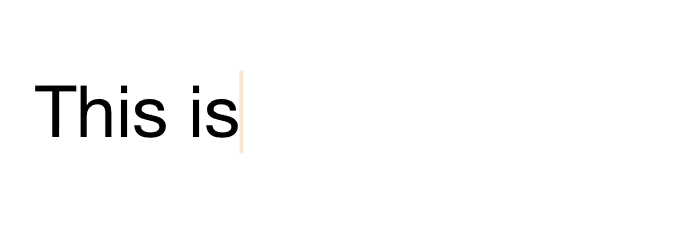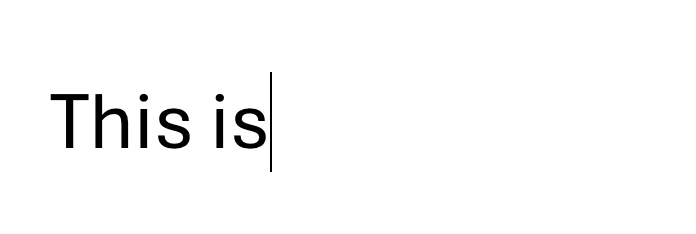Em Dash, En Dash, Hyphen: You Are Using Them Wrong the Whole Time
— – -
Could you tell them apart? That’s the em dash (longest), en dash (in between) and hyphen (shortest), respectively, and they are tricky little things that confuse even experienced writers with high levels of education.
As someone with formal training in copy-editing and proofreading, I always get just a bit irked when I see misuse of these punctuation marks, like “Ugh, they really need a proofreader” or “Seriously? This [well-funded company/institution] can’t even get their punctuation right with all that money?!”
I’m fully aware that I’m being a complete nerd here, but I care about punctuation, and this is why I’m writing this post to share the knowledge of proper usage of the em dash, the en dash, and the hyphen.
Difference in length
— – -
- Em dash: length of the capital M
- En dash: length of the capital N
- Hyphen: slightly shorter than the en dash
Em dash & en dash: What they share
“Tomorrow, we’re going shopping—with only 5 dollars.”
“These businesses – both local and international – are losing money.”
“Ron was happy that the event was cancelled, but Terry—he was devastated.”
“Understanding is a key part of communication—as I’m sure most of us know.”
In all three examples above, the em dash and the en dash are the same because they can both serve the purposes of:
- indicating a dramatic or abrupt change (e.g., “with only 5 dollars” and “he was devastated”),
- replacing parentheses (e.g. “both local and international”), or
- adding an additional thought or commentary (e.g., “as I’m sure most of us know”).
The hyphen cannot be used in these scenarios. It’s not a matter of style or preference; it’d simply be incorrect to use hyphens in any of the above examples because the hyphen serves a completely different purpose.
Em dash vs en dash: How to format correctly
While the em dash and the en dash are the same in aforementioned three scenarios, they are formatted slightly differently.
The em dash is always used WITHOUT spaces around it:
Tomorrow, we’re going shopping—with only 5 dollars.
This is the norm in North America. Government of Canada, for example, consistently uses the em dash in its publications. Crack open any book published by a North American publisher, and you will also see em dash being used.
The en dash is always used WITH a space on each side (except when it’s used to indicate range or attach prefixes and suffixes, which I will discuss next):
Tomorrow, we’re going shopping – with only 5 dollars.
This is the norm in UK or any countries that adapt British English, like Australia or New Zealand.
In case you are a fellow Canadian, while Canadian English uses British spelling, it uses the em dash (as seen in the Government of Canada link above).
Em dash vs en dash: Consistency is key
You should always pick one or the other for whatever body of work you are working on, and not sometimes use the en dash and other times the em dash.
For example, if you are writing a book, you should either stick with either the em dash or the en dash the entire book, and not flip-flop between them (though if you plan to be published by a publishing house, your book will generally follow their in-house stylesheet).
En dash’s unique function: Range
En dash can do something that the em dash and the hyphen cannot, which is to indicate a range or distance of two things, replacing “from…to…”:
- Jan–March (from Jan to March)
- 0–100 (from 0 to 100)
- Page 134–55 (from page 134 to page 155)
Neither the hyphen nor the em dash should be used in this usage. This function is exclusive to the en dash—don’t take it away from them!
Compare the following:
- Jan-March volume (hyphen): a volume that covers January and March, but not February, because the hyphen only joints two things but doesn’t indicate a range
- Jan–March volume (en dash): a volume that covers January, February and March.
Hyphen: Making compound words
Read the following headline and the leading text:
MAN DISCOVERED HUGE CAT-DEVOURING LARGE FISH
A man discovered a huge cat that is devouring multiple large fish.
Confusing, eh?! But that goes to show why the correct usage of the hyphen and the dashes matters!
The hyphen has several technical functions but the most common one is to joint two words together to make a compound word:
- well-designed
- sign-up
- follow-up
Hyphen vs en dash: Attaching prefixes & suffixes
I’m sure we all know this one—the hyphen is used for prefixes and suffixes:
- James’ post-librarianship days
- naan-like texture
But here’s the catch: If you want to put a prefix or suffix on an unhyphenated compound, like “Nova Scotia” or “World War I,” you should use the en dash rather than the hyphen:
- Nova Scotia–based writer (not “Nova Scotia-based”)
- pre–World War I policies (not “pre-World War I”)
Why? Because, technically, if you use the hyphen in “Nova Scotia-based writer,” it only attaches “based” to “Scotia” and not “Nova.”
You think I’m being ridiculous? Take a look at this one:
- New York-based writers (hyphen): New writers based out of York, UK
- New York–based writers (en dash): New writers based out of New York, US
It matters!
Okay fine, in most cases, the context should make it clear, or the sentence should be rewritten in a way that text’s meaning wouldn’t hinge so much on the tiny little line, but hey, like I said, I nerd out about details like this.
How to type the em dash, en dash & hyphen
There is no easy way to type the en dash or the em dash on Windows—can you believe that? On Mac, it’s much easier, but I’d wager that most people still probably don’t know how to type them.
Some applications, like MS Word and iA Writer (my favourite app for writing), automatically convert two hyphens to the em dash, and one hyphen to the en dash when there are spaces around it, but many applications only do the former and not the latter.
 Apple Pages auto-converts two hyphens to an em dash.
Apple Pages auto-converts two hyphens to an em dash.
 Microsoft Word auto-converts a hyphen enclosed by two spaces to an en dash.
Microsoft Word auto-converts a hyphen enclosed by two spaces to an en dash.
However, if you are using a text editor on a webpage, like a text box in a submission form, or the text field on a website builder like Squarespace, chances are that it won’t do any converting, so you will have to type the right one yourself.
Here’s how to do it:
Windows
- hyphen: the hyphen key (the key to the right of the 0 and right parenthesis key on the number row)
- en dash: WIN + . (period), then click the Ω tab, and the en dash is to the left of the em dash. If you have a keyboard with the numpad, hold ALT and type 0150 on the numpad and release the ALT key.
- em dash: WIN + . (period), and then click the Ω tab. If you have a keyboard with the numpad, hold ALT and type 0151 on the numpad and release the ALT key.
Mac
- hyphen: the hyphen key (the key to the right of 0 and right parenthesis key on the number row)
- en dash: OPT + - (the hyphen key)
- em dash: OPT + SHIFT + - (the hyphen key)
If you’ve read this far, I hope you enjoyed it as much as I did writing it. You are now a superior human being knowing exactly how to use the dashes and the hyphen—shall I say—dashingly well 😉
Subscribe to my blog via email or RSS feed.
Further reading
- https://www.merriam-webster.com/grammar/em-dash-en-dash-how-to-use
- https://www.chicagomanualofstyle.org/qanda/data/faq/topics/HyphensEnDashesEmDashes/faq0002.html
- https://www.noslangues-ourlanguages.gc.ca/fr/pecks-english-pointers/punct-4-hyphens-dashes